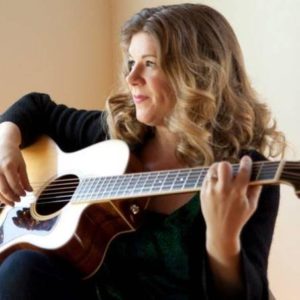Finding Magic in Strange Places
I’m speaking at a conference in beautiful Brattleboro, Vermont—but staying in a motel in the ugliest part of town, sandwiched between a McDonald’s and a Wendy’s. Still, when I got back to my room last night, I was low on exercise for the day so I decided to take a walk. Fortunately, the motel is very close to the Seabees Bridge across the Connecticut River, so I decided to walk to New Hampshire, about ten minutes of strolling in each direction.
It was a very good decision. The Seabees Bridge turns out to be a double span: a new, wide bridge carrying cars, and an older one just south of it, narrower, unlit, and blocked off from vehicles. The newer one closely resembles but doesn’t exactly duplicate the original bridge.
The pedestrian bridge has a number of amenities such as benches and picnic tables. And in the dark, both the double span itself and the river and shorelines below were powerfully evocative. I tried to photographic it, but my phone wasn’t up to the task. CAUTION: I found out the hard way that those amenities are hard to see on an unlit bridge at night, just as I stepped back off the bridge onto the Vermont side. OUCH!
It reminded me of other moments finding magic in strange places. In chronological order:
- A moment bicycling through the Bronx as a child of maybe 13, where I suddenly experienced a sense of freedom and joy.
- Another Bronx childhood moment, exploring an abandoned railroad track in Van Cortland Park and feeling like I was way out of the country in the time of Tom Sawyer.
- A Quaker meeting in the parking lot of a nuclear power plant construction site, in 1977 before 1414 of us took over the site in a protest against this horribly unsafe technology, and were arrested—almost 40 years later, still the most powerful spiritual moment in my memory.
- Staying at a cheap hotel at Disney World so I could attend a conference at an expensive Disney hotel about a mile away, and feeling the magic of the numerous small natural habitat spots left undeveloped here and there among the acres of manicured and probably pesticided lawns—perhaps especially powerful because of contrast with their sterilized surroundings.
- Just last month, another evocative dark bridge over a river—in Beijing, one of the largest cities in the world.
In that Disney trip, I used my powers of observation to notice far more than the habitat. Go back up to #4 and click the link, if you want to see what else I learned, and what business lessons I applied.
If you look at the world with observant eyes, hear with aware ears, touch with sensitized fingers, it’s amazing what you can discover. I remember one more incident that wasn’t magical, but tingled my senses. My wife and I (both writers) were walking through the woods many years ago, discussing ideas. I said that ideas were easy to find, and challenged myself to name (out loud) ten ideas in the next 100 feet of our walk. I stopped around 20. That incident led to a new folder in my crowded file drawer with ideas for books I may write someday: “How to Find Your Next 10,000 Ideas.”
If magic can be found in a parking lot, where else can you find it?

I love this line from Dar Williams’ song, “The Christians and the Pagans”: “You find magic in your God but we find magic everywhere.”
